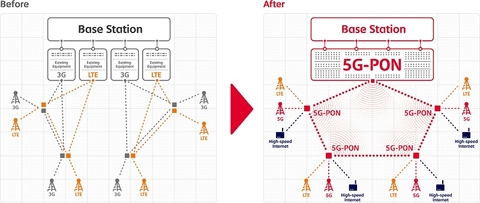SK Telecom says it will deploy 5G-Passive Optical Network (PON) technology in 85 markets, including Seoul, and it will propose its solution for the 5G network standards work of the ITU-T.
Besides Seoul, SK will roll out 5G-PON in Busan, Daegu, Daejeon and Gwangju and expand the deployment further down the road. It particularly expects that the quality of service will be improved in rural areas thanks to the easier deployment of 5G-PON.
The solution is the result of SK Telecom’s collaboration with local vendors, including Solid, HFR, SunwaveTec and Coweaver, that have strong skill sets in optical communications technology.
SK is never short of ambition when it comes to leadership in 5G. Earlier this month, the South Korean operator boasted that it had a hand in developing technology that will help 5G process data traffic 10 times faster than LTE, with hopes the 3GPP and ETSI will adopt it as part of the global 5G standard.
“With 5G-PON built on our own specifications, we secured opportunities to improve the quality of service and lay the foundation for a successful rollout of 5G,” said Choi Seung-won, head of Infrastructure Strategy Division, SK Telecom, in a statement. “We will continue to develop our capabilities for advanced network technology and operation necessary for 5G rollout.”
SK says that unlike the conventional distribution networks, where different types of network gear are required for 3G, LTE and broadband access, the 5G-PON solution delivers multiple communications services using a single network.

“The mobile communications network is a collection of interconnected networks throughout the country,” the operator said in the news release. “Distribution networks refer to networks connecting base stations with remote units and antennas installed at the premises.”
It also said the solution will facilitate the process of delivering broader coverage for the 5G rollout by simply installing base stations and antennas without additional networks.
In addition, the solution can be constructed in a protected ring architecture, so even if a line is disconnected, the communications services are delivered seamlessly using the other line.
Earlier this year, SK Telecom declared that it had successfully acquired all the essential technologies necessary for 5G commercialization using 3.5 GHz and 28 GHz frequencies.

